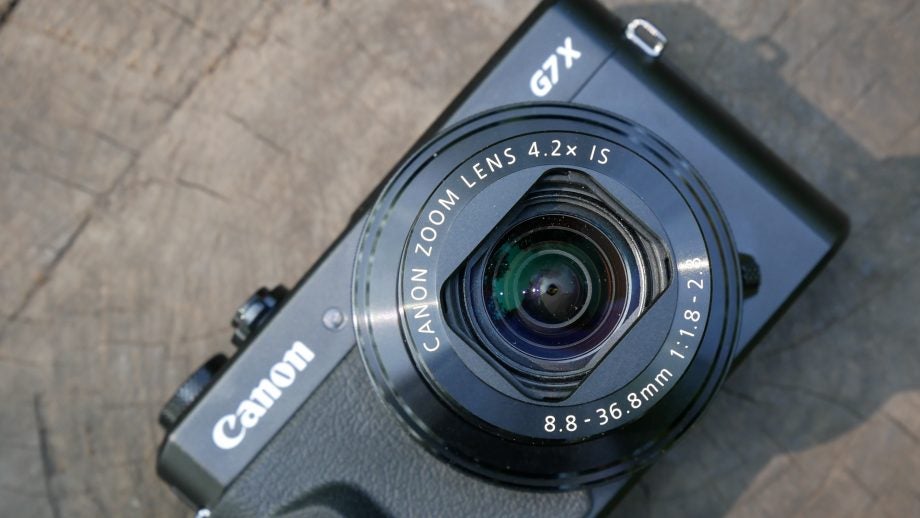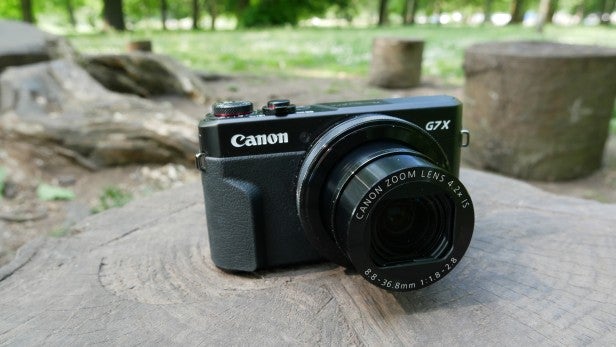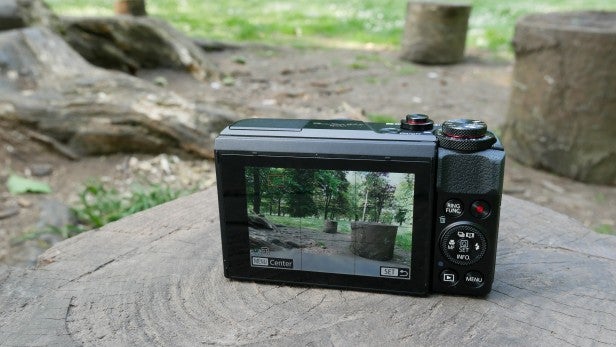Canon G7X Mark II Review
Canon G7X Mark II
A great, but expensive compact camera

Sections
- Page 1 Canon G7X Mark II Review
- Page 2 Performance, Image Quality and Conclusions Review
Verdict
Pros
- Large sensor
- Wide aperture lens
- Touch-sensitive screen
- Wi-Fi
Cons
- Lack of viewfinder
- Short zoom
- Macro focusing is tricky
Key Specifications
- Review Price: £550.00
- 20.1-megapixel 1-inch sensor
- Full HD 60p video recording
- Wi-Fi
- Digic 7 Processor
- Raw shooting
- f/1.8-f/2.8 lens
- 4.2x optical zoom (24-100mm equivalent)
What is the Canon G7X Mark II?
The Canon G7X Mark II sits in Canon’s premium range of compact cameras. It’s intended to appeal to those who want a device that offers a high level of control and excellent image quality, but slots into your pocket. It could be seen as a travel compact for those who own bigger cameras, such as a DSLR or CSC.
It’s an upgrade on the G7X, bringing a series of relatively small but useful updates – although it retains the same sensor and lens as its predecessor. It features manual control and raw format shooting, making it particularly appealing to enthusiasts.
Canon G7X Mark II – Design and Handling
There are currently five different models in Canon’s G range of premium compact cameras. The G7X Mark II, in terms of body shape, sits alongside the G9X in offering a premium set of specifications in a pocket-friendly body. While the G9X is even smaller than this offering, the slightly bigger body means you get a tilting screen, and a longer lens.
In order to keep the size down, other trade-offs have also been made. You don’t get a fully articulating screen and, crucially, there’s no viewfinder either. If you’re an enthusiast photographer used to shooting with a DSLR or high-end CSC then this is likely to be something you’ll miss. If it’s particularly problematic, you can opt for the G5X instead.
The overall design of the G7X Mark II is pretty sleek, if arguably a little on the utilitarian side. There’s a useful grip on the front of the camera that helps it sit snugly in the hand.
Atop the camera is a dial for quickly moving between the different exposure modes on offer, while just beneath it sits an exposure compensation dial that can be very easily reached by your thumb for making quick changes.

In fact, all of the buttons are grouped on the right-hand side of the camera, which means that making adjustments is a very speedy process.
Just as you could with its predecessor, there’s a ring around the lens to make changes to the settings. By default, it will be set to alter aperture, but you can set it to another option in the main menu if you prefer – ISO, for example.
A useful switch underneath the lens dial switches off the clicking sound that the dial makes as you turn it around. Although it’s a satisfying noise and provides confirmation of setting changes, if you’re shooting a video – or taking photos in a quiet situation – it’s useful to be able to switch it off.
To change the other manual settings, you can use the scrolling dial on the back of the camera, along with a quick menu – accessed by a button marked with a “Q”. This menu features settings that you’re likely to change often, such as white balance, timer, metering and so on.
It’s worth noting that the G7X Mark II has no hotshoe to allow you to attach external accessories, such as a flashgun. A small built-in flash is present; it needs to be released via a switch on the side of the camera before it can be used.
Buy Now: Canon G7X Mark II at Amazon.co.uk (£544) | Amazon.com ($799)
Canon G7X Mark II – Screen
Although there’s no EVF, the fact that the screen can tilt is helpful, both when shooting from awkward angles, and also when bright light shines on the screen; simply tilt it out of the direction of the light. The screen also faces all the way forward, making it ideal for capturing self-portraits.
The screen displays good colours, and it’s also touch-sensitive. This means you can set the AF point by quickly tapping on the screen, as well as navigating through both the quick menu and the main menu. When viewing images in playback, you can pinch to zoom to check focus, and swipe through images.
Related: Best Camera 2016

Canon G7X Mark II – Lens
Many travel compact cameras have a huge zoom, providing maximum flexibility when it comes to taking your travel shots. However, the trade off is that they come with small sensors, which don’t produce the best image quality that a one-inch sensor can produce.
The G7X II lens is a more modest 4.2x, which is roughly equivalent to 24-100mm. By comparison with a superzoom, which offers 30 or 40x zoom, it may seem paltry. However, for most everyday shooting scenarios, it should be more than enough – and in fact offers more scope than the classic 24-70mm full-frame lens choice of many enthusiasts and pros.
Another advantage of having a shorter lens is that it facilitates much wider apertures. Here we have f/1.8 at the widest point, rising to a wider still f/2.8 at the furthest reach of the optic. This is great news for creating shallow depth-of-field effects, as well as opening up aperture to allow in more light during low-light shooting scenarios.
Throughout the camera’s focal length range, there’s a good degree of detail displayed, so you can use either end of the lens (and the focal lengths in between) with confidence.
There exists the opportunity to boost the zoom capability with digital zoom; in fact, Canon offers two levels of digital zoom here. As I usually find, this is useful but best avoided if you want to maintain ultimate image quality. That said, images taken at the first point of the digital zoom are usable for sharing online.

